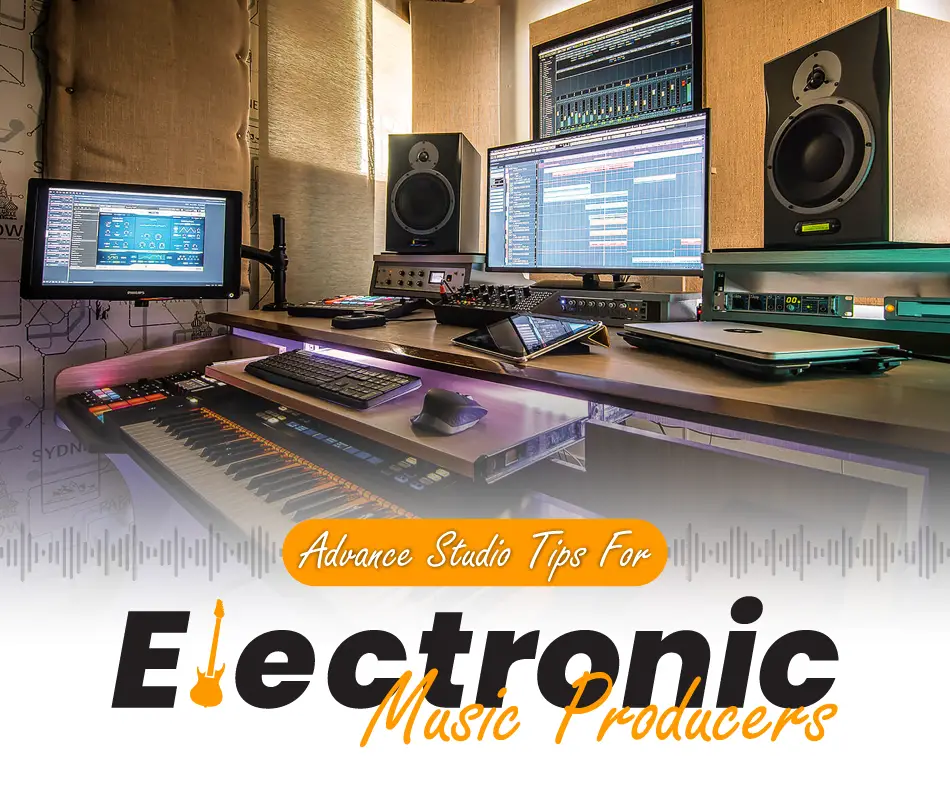Dj Vs. Producer – What’s the Difference?
Lately, there’s been a growing amount of confusion between the two and often people would mistake one for another and vice-versa. If you’ve just enrolled for music lessons, you will probably learn this sooner or later. So, let’s clear things up. Someone who sits in front of a computer working with software and hardware to create music is a music producer.

On the other hand, a DJ or a disc jockey is someone who would play the recorded music in front of an audience. Traditionally, they did it with vinyl turntables. But, more recently they are doing it with CDJs.
Tools You Need to Make Electronic Music
Laptop/Desktop Computer
A no-brainer, this is the first obvious tool you would need to produce any kind of music. To help you with specs, here’s what to look for –
- 1 TB storage
- 16 gigs RAM
- 2 USB ports (at least)
- 2.4 GHz clock speed
Dell Inspiron 5000 might be a good jumping-off point to buy if you’re confused about which one to go with. If not, go with the one that has a big screen. The bigger, the better. You should also look for a computer designed for music production specifically.
Digital Audio Workstation (DAW)
Digital Audio Workstation is software that you use for editing, producing, and recording audio files.
Three of the most promising DAWs are Logic Pro, Ableton Live, and Fl Studio. You can go through a ton of tutorials available on YouTube, for instance, where you can learn all about the inner workings of a DAW. Remember, as a music producer, you will have to do a ton of research.
Headphones
As a beginner, you can stick with anything that costs you more than 20 bucks. But, make sure not to use the average quality stock headphones that everyone uses with their laptop or computer.
Be sure to check out the audio files and see the sound quality. As you make progress and advances, picking the right kind of headphones will become that much more important. But, even as a beginner – make sure that the headphones attain a decent balance between each element of the track.
Midi Controller
So many of the instruments used for creating music are controlled by MIDI information. For that, you need a MIDI controller. The easiest way to do that is to invest in a MIDI keyboard. In terms of appearance, they look like your average keyword. However, they output only MIDI data.
In terms of cost, a MIDI controller is rather budget-friendly. Having a MIDI controller will give you a great sense of control over the instruments you work with.
Audio Interface
Also known as a ‘sound card’ the job of an audio interface is that of an expansion. It essentially offers input/output of audio signals to/from a computer.
The only way to listen to what you have created, or to use a MIDI controller – you’re going to need an audio interface. Scarlett 2i2 is a highly recommended audio interface that you can use. It uses a USB connection.
Advance Studio Tips for Electronic Music Producers:
Learn About Compression Techniques
Learning about compression techniques and mixing is crucial. When you have a good handle on compression, you can strike a balance between the lowest and highest gains of the audio channel all through the track. Only then you can turn the volume without having that issue of audio clipping.
Use Quality Source Sounds
This may sound like a no-brainer – yet an amazing number of producers would pick samples with clicks, pops, digital distortion, or just nasty fidelity.
How do you tell a poor-quality source from a good one? Simple! Pay attention while listening. This may sound like a cliche but it’s the only effective way to discern good from the bad.
Be Aware of Over-limiting
Limiting may be a good tool but use it judicially. When you try to reach the loudest track possible, you wind up with a file that has no troughs and peaks. Its dynamic range is also little. In the end, you may have a loud track, but it would sound unnatural to the human ears. Always strike a balance between dynamic range and loudness.
Limit the Amount of Instruments Playing at Once
Stick with the concept of KISS (keep it simple stupid). Using too many different kinds of instruments and elements could easily overwhelm your listeners.
In case of too many tracks struggling for the same space, you may wind up in some of the sounds getting muffled. Use your EQ tools to reach a fine balance.
Be ruthless with your arrangement and edits so you can create a track that’s interesting and doesn’t overwhelm the listener. Get rid of anything you don’t need to evoke the desired emotion/feeling.
Use Saturation
You would ideally want to aim for tracks that are warm, fat, and analog. To that end, you would want to use a technique of coloring or saturation. It’s a music production technique that allows you to improve the harmony of a track/sample with the final goal to fatten up the sound.
In simple words, saturation gives it a bit of body. But, use it judiciously. Use a saturation plugin through which to run each individual track. From here, you can tweak the harmonics of the track that lack the desired body. Again, don’t overdo it. Use good taste and ears to guide you through the process.
Bottom Line
These are some of the things you can do to become a successful electronic music producer. Hopefully, you enjoyed the post. Do share your thoughts in the comments section.